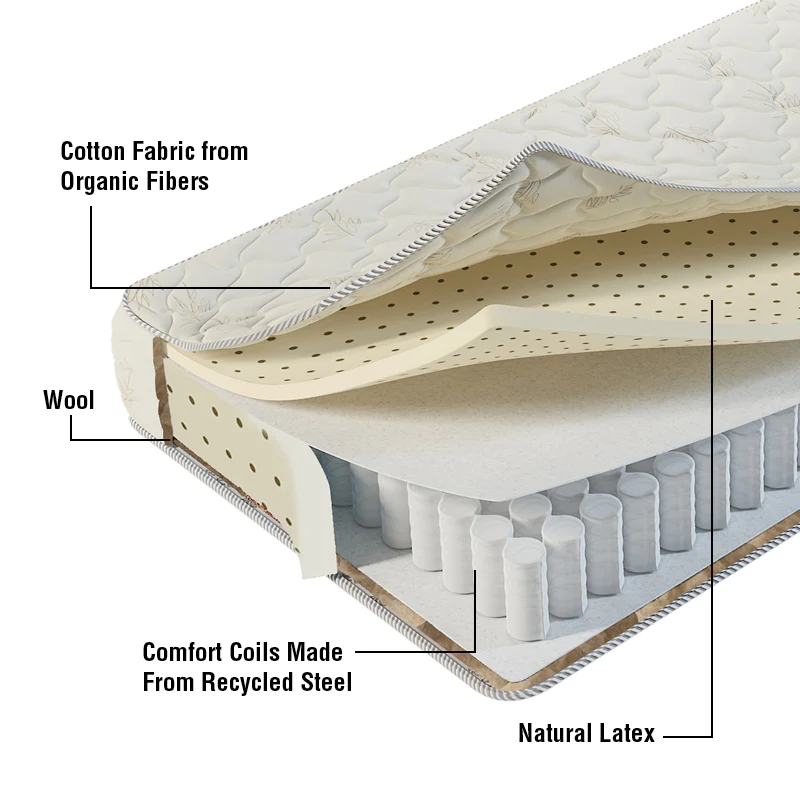When it comes to comfort and support, the choice of mattress or cushioning material can greatly affect your overall well-being. Two commonly used materials that often lead to confusion are regular foam and memory foam. What’s the difference between foam and memory foam? In this article, we’ll dive into the nuances, characteristics, and benefits of each, helping you make an informed decision for a restful night’s sleep or comfortable seating.
Foam and memory foam might seem like interchangeable terms, but they possess distinct features that cater to different preferences and needs. Here’s an exploration of their primary differences:

Foam, also known as polyurethane foam or polyfoam, is a widely used cushioning material. It has an open-cell structure, allowing air to flow through, resulting in a more breathable and cooler surface. On the other hand, memory foam, scientifically called viscoelastic foam, has a viscoelastic property that responds to heat and pressure. It conforms to the body’s shape, providing excellent support and reducing pressure points.
Foam offers a balanced level of support and comfort, suitable for various sleep positions. It’s resilient and doesn’t retain its shape after pressure is released. Memory foam, however, excels in contouring to the body’s curves, offering personalized support. It cradles pressure points, making it a popular choice for those with chronic pain or specific support needs.
Foam mattresses are known for their responsive bounce, which is beneficial for ease of movement and activities like intimacy. However, this responsiveness might lead to increased motion transfer. Memory foam, with its slow response rate, minimizes motion transfer, ensuring that movement on one side of the bed doesn’t disturb the other.
In terms of durability, memory foam tends to outlast regular foam. The higher density of memory foam contributes to its longevity. Regular foam, while comfortable, may show signs of wear and compression over time, especially in high-use areas.
One common concern is heat retention. Memory foam has a reputation for trapping body heat, potentially leading to discomfort, especially for hot sleepers. Modern memory foam mattresses, however, often include cooling technologies to counteract this issue. Foam mattresses, with their open-cell structure, allow heat to dissipate more easily.
Foam mattresses are generally more budget-friendly compared to memory foam mattresses. The cost difference is due to the manufacturing process, density, and additional features like cooling technologies.

Foam’s open-cell structure promotes airflow, making it an excellent choice for those who tend to sleep hot. The interconnected air pockets allow heat to dissipate, preventing the buildup of heat during the night. Memory foam’s denser structure, however, can retain heat. This issue has been addressed by incorporating cooling gel infusions and ventilation systems in modern memory foam products.
Foam provides a consistent level of support throughout its surface. It’s particularly suitable for individuals who prefer a more traditional mattress feel with slight bounce. Memory foam’s adaptability to body shape makes it an ideal choice for people seeking relief from pressure points, joint pain, or spinal alignment issues. It distributes weight evenly, reducing discomfort during sleep.
The buoyant nature of foam gives it a responsive bounce, making it easier to move around on the mattress. However, this quality can contribute to motion transfer, potentially affecting sleep quality if you share the bed. Memory foam, with its slow response rate, absorbs and isolates motion, ensuring that your partner’s movements won’t disturb your sleep.
Memory foam’s higher density contributes to its durability. It’s less prone to sagging and indentation, making it a durable investment over time. Foam, while comfortable, may show signs of wear in high-use areas like the center of the bed or the edges. Choosing a mattress with higher foam density can extend its lifespan.

Memory foam’s heat retention issue has led to the development of innovative solutions. Cooling gel infusions, breathable covers, and ventilation systems enhance airflow and regulate temperature. Foam’s open-cell structure inherently prevents significant heat buildup, ensuring a comfortable sleep environment.
Foam mattresses are generally more budget-friendly, making them an attractive option for those seeking comfort without breaking the bank. Memory foam mattresses, with their advanced features and benefits, come at a higher cost. Consider your priorities, needs, and long-term comfort when deciding between the two.
In conclusion, understanding the difference between foam and memory foam is essential when making a decision that directly impacts your comfort and sleep quality. Each material has its unique characteristics, catering to different preferences and needs.
Foam, with its open-cell structure, offers breathability and a balanced level of support. It’s a budget-friendly option that suits various sleep positions and provides a traditional mattress feel. On the other hand, memory foam’s viscoelastic property contours to your body, offering personalized support and relief from pressure points. While memory foam has been known for heat retention, modern advancements have introduced cooling technologies to counteract this issue.
Both memory foams and regular foams can provide relief for back pain, but memorys foam’s contouring abilities often make it a preferred choice.
Yes, hybrid mattresses often combine memory foams and regular foams layers to provide a balance of support and comfort.
Memory foams mattresses can emit a noticeable odor, often described as a “new mattress smell.”
Yes, there are eco-friendly alternatives available for both memory foams and foams mattresses.
On average, foam mattresses can last around 6-8 years, while memory foam mattresses may last 8-10 years. Factors like mattress quality, usage, and maintenance can influence their lifespan.